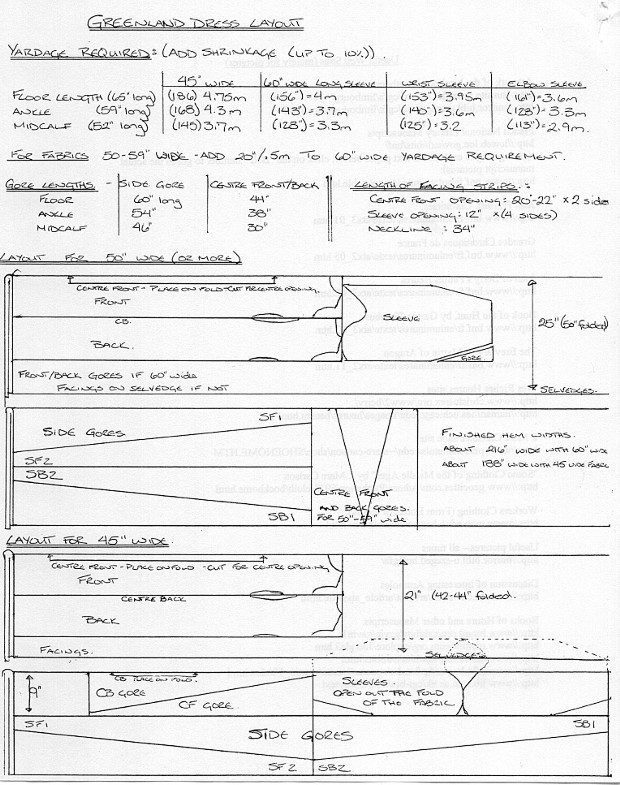Constructing the GarmentIt is important to begin with the style in mind. Here are a few questions that you need to answer before beginning this project:
The answers to these questions will determine how the pieces are laid out and cut. It also answers how much fabric is necessary to complete the project. Two factors determine the quantity of fabric necessary. One is the size of the person who is to wear the garment, including their height and circumference. The other factor is the width of the material, which determines the diameter of the hem and where the sleeves can be cut. Generally the yardage is measured in the length of the gown, from the shoulder to the floor, plus the under arm to the floor, plus a sleeve length. The following example will be described in detail in the following instructions. Example: A size 16 for a 5'8" woman with eight side gores, sleeves, and front and back gores requires only 4 metres if the material is 60" wide. The neckline will be a simple scoop style and the sleeves have buttons from the elbow to the wrist. For precise layout and yardage requirements, scroll > down. Measurements, Layout and Cutting When constructing this pattern for the first time, it is a good idea to use a natural, inexpensive fabric such as muslin. Always use a woven fabric that will not stretch when pulled on the grain. When measuring, it is better to have too much fabric and pinch away the excess, rather that not have enough for a comfortable fit. Please refer to the cutting diagrams (figures 4 + 5) Note: Most muslin will stretch a very little bit and this is fine unless you are making a pattern for a garment that must hold the bosom up. This would be better executed in a light canvas type of cloth, at least for the top.
|
